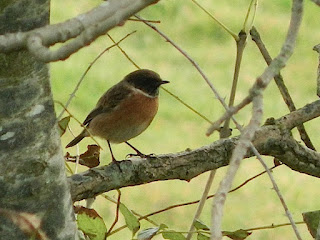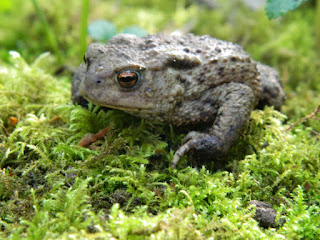On a less contentious note; what's been happening in the Aldcliffe recording area? Well from what I can see, very little. My recent sorties have been fairly uneventful and despite the not-so-big-freeze yesterday there appears to have been little cold-weather movement of birds.
This morning, a dozen goldeneye on Freeman's Pools was the largest recent count of this handsome diving duck.
Generally, there don't seem to be too many around in the LDBWS region this winter and double figure counts are few and far between. Five tufted duck and a scattering of gadwall, wigeon, mallard, teal and coot continue to reside on the pools.
A pair of roe deer were present this morning - the first I've seen down there for some time.
 |
| Canada geese & wigeon |
When I was working at Leighton Moss on Tuesday a load of greylags were out on the marsh beyond the Eric Morecambe Pools and with them was a pair of white-fronted geese.
Naturally, I'd hoped that maybe these two 'proper' geese might travel with the greylags (if in fact they are the same flock) but there was no sign of them.
Along with the numerous ringed Canadas and collared greylags was a darvic-ringed greylag that I have never seen here before - it'll be interesting to see where that bird has come from!
 |
| Grey partridge |
Raptors-wise, a peregrine was sat out on Colloway Marsh yesterday while three different sparrowhawks (ad male, ad female & 1stw male) were seen at various spots between Freeman's Wood and Aldcliffe Hall Lane today.
A kingfisher added a splash of colour at the otherwise quiet Wildfowlers' Pools yesterday and a pair were flying down the Lune at Marsh Point this morning.
There are still tons of blackbirds and a few song thrushes in the hawthorns along the cycle track but the bulk of fieldfare and redwing appear to have moved on.
I'll be working at Leighton Moss again tomorrow (NY Eve) so this will be my last post of the year.
Have an enjoyable and safe New Year and here's wishing for a bird-filled 2017!
Jon

































